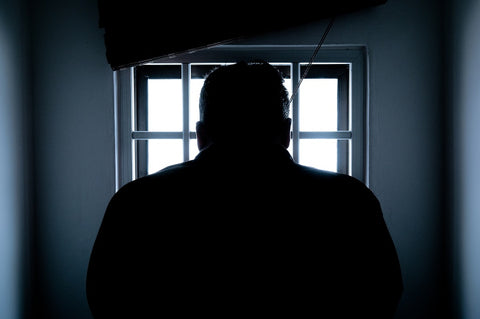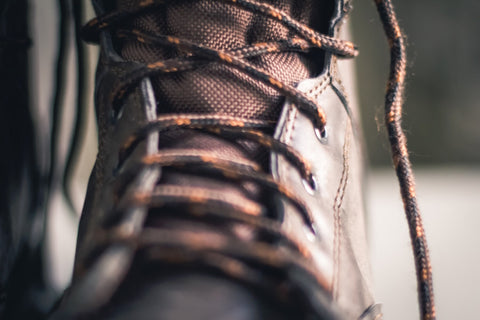How to Keep Your Hospital or Correctional Facility Safe from Self-Harm

Equipment That Can Protect Inmates and Patients From Self-Harm and Suicide
Suicide attempts and fatalities in prisons, jails, custodies, hospitals and related health care facilities are an increasingly harrowing phenomenon. A 2016 study from England and Wales reported that suicide rates are particularly higher among the incarcerated than the rest of the population: specifically, the study notes that the suicide rate among female prisoners is 20 times higher than the general population – for males, it is five to six times higher.
There are plenty of social, economic, and medical factors linked to these suicides, and they are amplified by the environmental factors of prison – these may include isolation, separation from family or society, lack of protection or safety, difficulty adjusting, and lack of purposeful daily activity.
A similar issue persists in health care and mental health facilities. Suicide and self-harm rates are high in these facilities, and as a result, professionals are continuously looking for strategies to limit these instances.
Luckily, plenty of equipment is being developed to combat these high self-harm numbers. Read below to learn about some of the tools that are being incorporated throughout facilities to protect patients and inmates.
READ MORE: Suicide Prevention Products By Argentino
Inmate Suicide from a Legal Perspective
Can a facility or institution be held legally responsible for the suicide of an inmate or patient? In some cases, yes.
Canadian law states that, in order to establish liability, the following must be proven:
- A legal duty is owed by the institution to the inmate or patient
- That duty has been breached
- The inmate or patient has suffered an injury
- The institution must have been the proximate cause of the injury
Correctional Service of Canada states that it is the duty of these institutions to “take all reasonable steps to avoid acts or omissions which, when reasonably foreseen, would be likely to harm the inmate for whom they are responsible.”
Multiple lawsuits have taken place in recent Canadian history stemming from incidents involving suicide or self-harm in these facilities. Thus, it is important from both a moral and legal perspective to protect the incarcerated and other patients to a full extent.
READ MORE: Correctional Service Canada on Liabilities in Inmate Suicides
Suicide Prevention Products That Can Keep Patients and Inmates Safe
Some of the clothing worn and furniture used by people who occupy these facilities can be obstructed to be used in suicide attempts. As a result, many developers have created objects that are designed to prevent these incidents.
Safety Furniture
The furniture placed in these environments must be selected carefully to prevent self-harm or suicide. This means that facilities must be equipped with beds, chairs, and tables that are designed in a way that prohibits them from being used in suicide attempts.
Examples of furniture designed for safety include:
- Floor-mounted beds, which have no sharp edges and cannot be moved
- Chairs, which have no sharp edges and cannot be kicked over
- Tables, which have no sharp edges and cannot be moved or taken apart
- Shelves, which have no sharp edges and are mounted to avoid falling or moving
Restraints
Some facilities may choose to restrain individuals who are at high risk for suicide or self-harm. While these products are primarily intended to prevent harm, they should also be comfortable and durable.
Examples of restraints include:
- Padded helmets, designed to reduce head injuries
- Adjustable straps, which can restrict hands or feet
- Leather cuffs, which restrain hand movement and do not lock
- Jackets, which includes multiple straps for significant protection
Clothing for Harm Prevention
Inmates and patients may be instructed to wear clothing that is designed to prevent harm. Specifically, they cannot be ripped or torn to be used for other purposes. While these products are primarily intended to prevent harm, they should also be comfortable and durable.
Examples of preventative clothing include:
- Shirts, smocks, and gowns, which cannot be torn
- Jackets, which includes multiple straps for significant protection
- Slippers, which do not have laces or hard materials
How Else Can Facilities Reduce Harm?
The right equipment can prevent harm in prisons and health care facilities. However, these institutions can take further steps to reduce harm, incorporating this equipment in a carefully-designed environment.
Examples of these measures include:
- Ensuring that there are no protruding hooks or objects on walls
- All telephones or appliances brought into cells should be cordless
- Sufficient lighting should be provided
- Cells should be equipped with functioning smoke detectors
Looking for more tips? The National Center on Institutions and Alternatives published a checklist for harm-resistant facility design with further guidelines.
READ MORE: How Suicide Prevention Products Work
Prisons, detention centres, hospitals, and health care facilities have a duty to protect inmates and patients from self-harm. Thus, designing facilities carefully and stocking them with equipment that reduces the risk of harm is a step that should be taken. While it may not be possible to completely stop every instance of self-harm, every step should be taken to help prevent these incidents.












